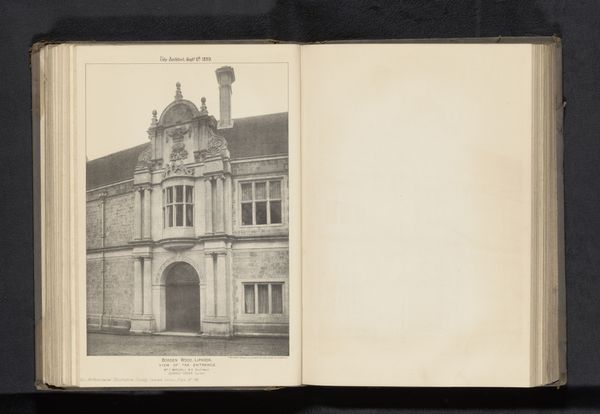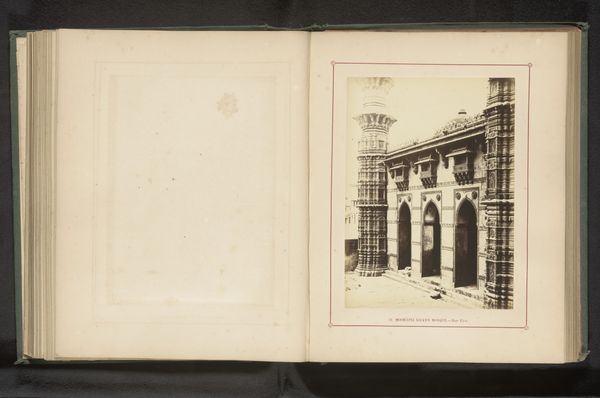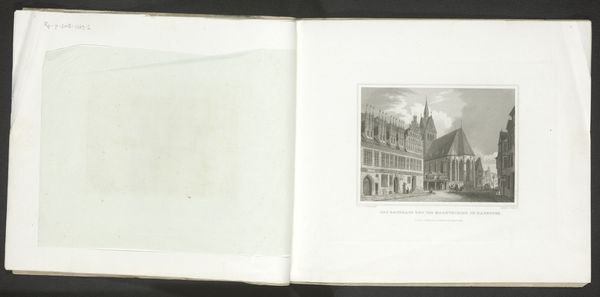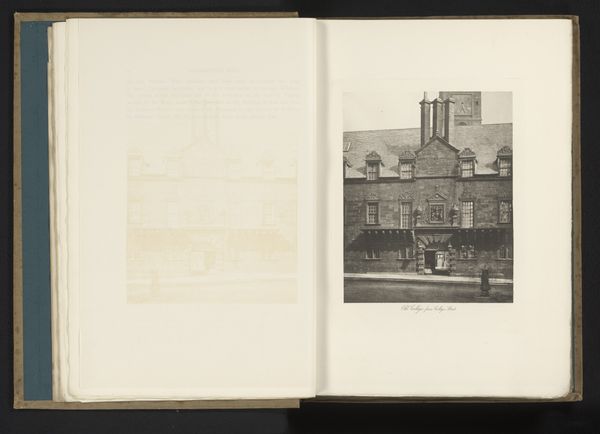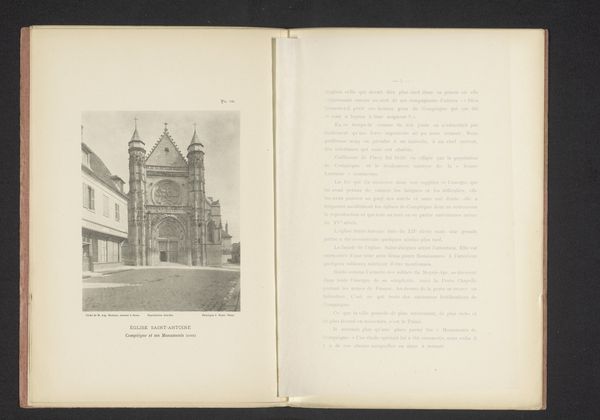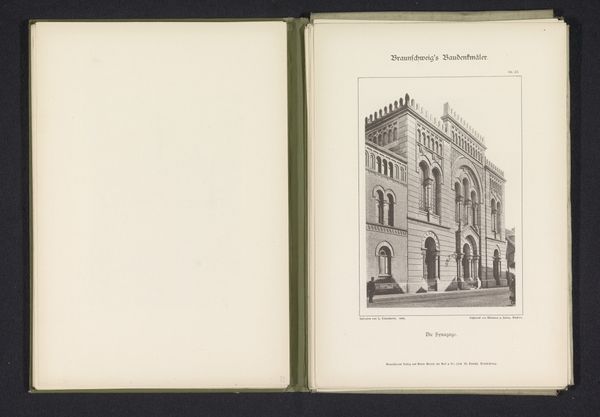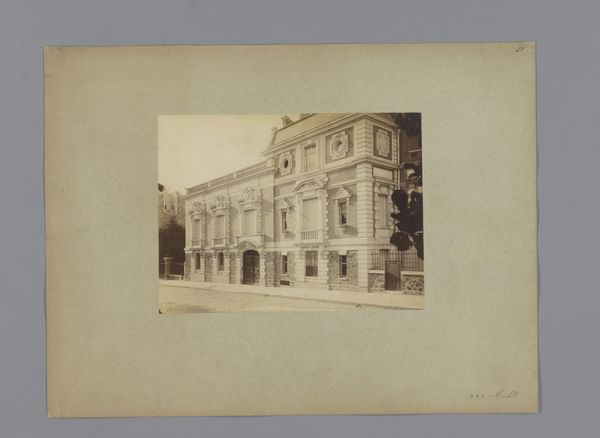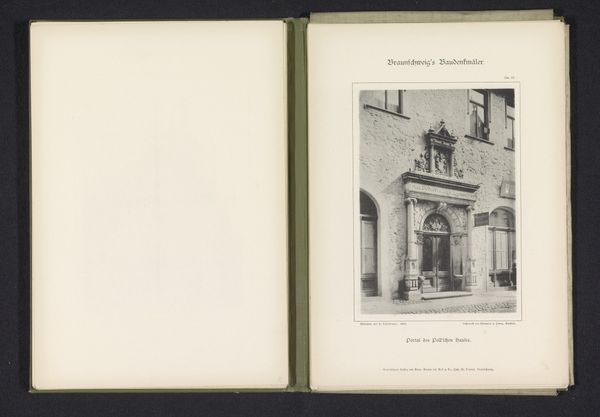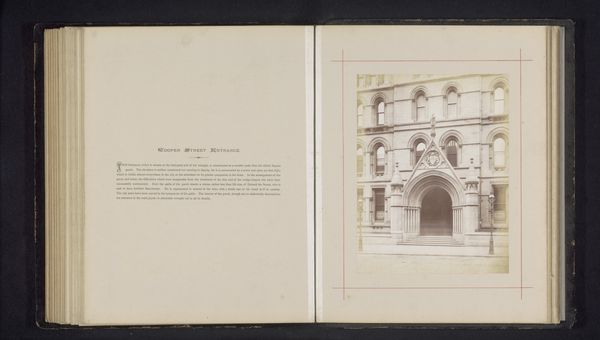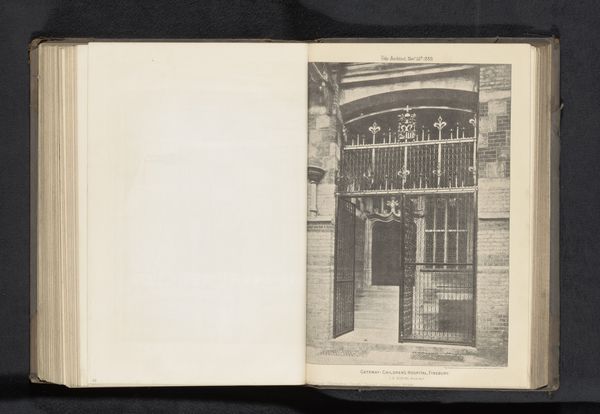
print, photography, architecture
# print
#
landscape
#
photography
#
classicism
#
arch
#
architecture
Dimensions: height 163 mm, width 265 mm
Copyright: Rijks Museum: Open Domain
Curator: Oh, that is melancholy! It feels so…still. Like a breath held a very long time ago. Editor: We're looking at a detail, a photograph, specifically, titled "Detail van het Borden Wood House." It’s dated before 1889 and appears to have been captured in a print medium, perhaps within a book or journal. This style is very reminiscent of classicism. Curator: Classicism rendered almost ghostly. Look at those arches and that stone ornamentation. You can almost smell the dampness and feel the chill. It reminds me of an abandoned theater stage, all grandeur and silent secrets. I find it haunting. Editor: Absolutely. There's a certain weightiness to the architectural detail. The image is printed in high contrast, the interplay of light and shadow emphasize the geometric shapes of the architecture, typical in classical designs from this time. We also see it emphasizing a feeling of history. This would have likely been reproduced to a wide audience. Curator: It’s the geometry that contains the story, isn't it? All those arches holding something – a family's legacy, maybe? Or even a political weight that is not literally portrayed, but implied? I get this strong sense of something substantial just underneath what is visible. You can glimpse just a tiny bit in what appears to be carved ornamentation. Editor: Yes, it's all about suggesting power, visually. Architecture was – and continues to be – an extremely potent form of visual rhetoric. A house like this screams wealth and historical importance. This image, I believe, functions similarly, but disseminated to an unknown public audience through this book. It captures the building's essence for viewers perhaps unfamiliar with its architectural details, offering accessibility. It's a photograph preserving the architectural ideals. Curator: So interesting that photography becomes the great equalizer here, disseminating power! In many ways it makes me feel the same as if I stood before the physical location itself. I can see what was preserved. It shows what could have been for some and not others, but made tangible by the still capture of time. Editor: Exactly. Well, this brief look has really allowed us to get a sense of the work and historical function it played, haven't we? It is one to linger with a bit. Curator: A beautiful and sobering meditation, for sure.
Comments
No comments
Be the first to comment and join the conversation on the ultimate creative platform.
